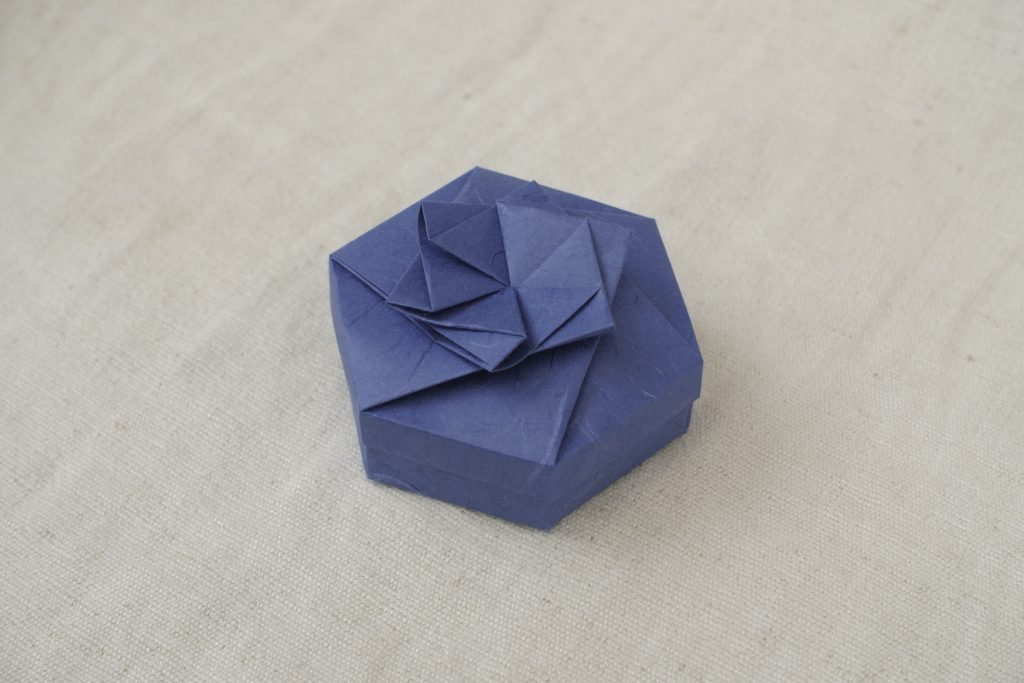David Brill published only one origami book, but it’s one of my favorites : “Brilliant Origami” (ISBN 0870408968). The diagrams are fabulously drawned, the models are varied and interesting to fold.

Papers: top left, 20cm nuinui box “motifs japonais” ; middle left, Showa Grim washi chiyogami 15cm ; bottom left, double-sided kraft from schoenepapiere.de ; center, Djeco 20 cm ; top right, Daiso Modern pattern washi chiyogami ; center right, japanese chiyogami ; bottom right, Daiso metallic chiyogami paper gold and silver.
This model, however, is not in the book. I had folded most models of it by then, so I was looking at his website – hoping he had published more. He hasn’t, sadly, but I saw the photo on the gallery of his website, and commented to ask if the diagram was published (sometimes authors publish models in obscure booklets that can be found with a little search).

I checked his website regularly in the next days, hoping for an answer to my comment, but there was none, so I moved on.

But then, a few months later, I checked again, and there it was! Turns out, the model was not diagramed, but he drew it after I asked – which of course took some time. I was so happy to have the diagram, and touched that he made it for me – I jumped happily around the house for a few days, and spent quite a while folding a lot of them, as you can see.

So on his website you can find the diagram! 
Enjoy! (and don’t hesitate buying the book, whatever your favorite origami is, there’s some in it :))














